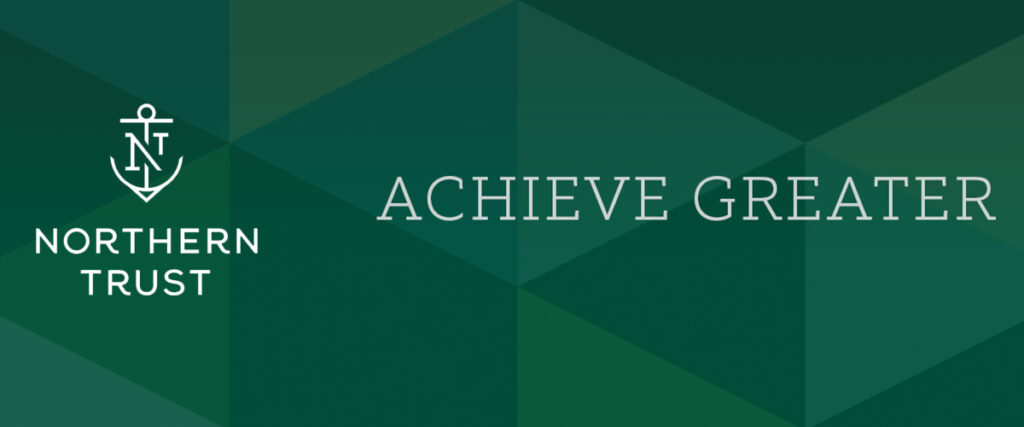Brighter Summer Days
A Mid-Year Market Update from Northern Trust

By Katie Nixon, CFA, CPWA®, CIMA® Chief Investment Officer, Northern Trust Published June 30, 2023 in Northern Trust’s Weekly Five
By several meaningful measures, we end the first half of 2023 in a more comfortable place than we began it. While labor markets and consumer spending have remained strong, inflation has moderated enough to allow the Federal Reserve to relax (if not entirely give up) its aggressive campaign of interest rate hikes. Historic bank failures and a U.S. government borrowing impasse roiled markets, but temporarily, and stocks in the U.S. and globally are largely ending the half on a welcome high note.
Here are our five takeaways from the week of June 30, 2023.
What are the highlights of global stock market performance for the first half?
The second quarter marked significant progress for risk-asset markets globally, with some discernible trends. First, the month of June provided the bulk of returns across global equity markets, with the MSCI All Country World Index rising nearly 4.5% for the month and 5.7% for the quarter. The year-to-date return for global equities topped 13%.
It was a great quarter for investors in U.S. equities, with the Standard & Poor’s 500 gaining more than 7%, driving a 15%+ return year-to-date. Many had worried about the narrow nature of the advance in early June, with a few stocks representing more than the lion’s share of gains. During the month, however, share price gains broadened: The equal-weighted S&P handily outperformed the cap-weighted index for the month. Underneath the hood of the U.S. market, value stocks took the upper hand for the month, although continue to lag their growth counterparts both for the quarter and so far this year.
Abroad, The MSCI’s EAFE Index of large and mid-cap securities in Europe, Australasia and the Far East, lagged the U.S. indices, but has climbed more than 11% this year. Emerging markets marginally bested EAFE for the month, yet lag behind all developed markets on a quarter- and year-to-date basis, weighed down in particular by significant underperformance of China. On a quarterly basis, emerging markets ex-China outperformed the broad Emerging Markets index by over 5%.
What is fueling consumer sentiment?
With rising equity prices, stable home prices, low unemployment and falling inflation, it is not a surprise that consumers are feeling pretty good. The University of Michigan Consumer Sentiment Survey reading for June came in at 64.4, ahead of the consensus estimate and a 9% improvement over May’s reading.
Both the present and the future appear brighter in consumers’ eyes, with the “current conditions” reading improved to 69% and the “expectations” component also improved significantly from the month before. This bodes well for resilient consumption, which has been trending softer recently, with personal spending more or less flat in the latest reading.
As we have observed in the past, consumer sentiment is heavily influenced by gasoline prices, which are on constant display, and we encounter on a regular basis as we fill up our tanks. A year ago, the national average price for a gallon of regular was $4.857. It now sits at $3.543, a decline of over 25% according to AAA. This is meaningful, and influential on sentiment.
What is the latest on Europe’s inflation fight?
Inflation in Europe continues to trend sticky and uncomfortably high. While eurozone flash Consumer Price Index data for June fell modestly, driven by a drop in energy prices, core inflation still rose to 5.4% as a strong labor market drove higher wages.
The unemployment rate in the eurozone hit the all-time low of 6.5% again. Unlike in the U.S., where we continue to see economic resilience, the macroeconomic environment in Europe is strained with Germany already in a technical recession. This keeps the European Central Bank and its president Christine Lagarde in a bind, as inflation pushes tighter monetary policy, and the potential for an even deeper recession. President Lagarde has been vocal and direct that the ECB would fight inflation — requiring higher rates, for a longer time. This puts a July rate hike very much on the table if not a certainty at this point.
Inflation: Are we there yet?
Personal Consumption Expenditures inflation, the Federal Reserve’s preferred measure, fell 0.5% from a year earlier to 3.8%, its lowest level since April 2021 and far below the expectation of 4.6%, Core PCE inflation is at 4.6%, below expectations of 4.7% but remains sticky, falling only 0.1% from a year ago.
The devil is in the core here, with insufficient progress being made. The core inflation ex-shelter data are proving difficult to tamp down amid the healthy labor market backdrop. With heavy influence from wages, services inflation runs hot. With labor markets being a key driver, it is unlikely that we can make significant progress on this type of inflation without seeing some softness in the labor market.
While weekly unemployment claims did fall this week, the moving average is still rising which may indicate some softening around the edges. The absolute level of weekly claims remains far below one consistent with significant weakening. The data supports our “tighter for longer” forecast for U.S. monetary policy, and the “higher for longer” interest rate forecast — a forecast that is affirmed consistently by the Fed’s communications.
How are bond investors balancing resilient growth and stickier inflation?
Market expectations continue to respond to incoming data, and are adjusting to accommodate a stickier inflation outlook, but also a more resilient growth backdrop. Influenced by the growing economic evidence supporting a soft-landing forecast, and observant of the inflation data that is trending in the right direction but proving to be stickier and more persistent than the Fed’s policy target, investors are adjusting their base case.
Futures markets are now pricing in a nearly 90% chance of a July rate hike and nearly 40% chance of two hikes by October. The yield of the U.S. two-year Treasury has gone above 4.9%, reflecting investors’ expectations for stickier inflation requiring “higher for longer” rates. Spot treasuries and futures have been adjusting, and readjusting constantly in 2023. These adjustments have accompanied generally rising equity prices and low equity volatility. Markets are taking the evolving Fed landscape in stride, under the belief that the end of the rate-hike cycle is near, and that the soft-landing economic forecast is more likely.




